2016 Honda Pilot: Car Seat Check


CARS.COM — Talk about a makeover. For 2016, the Honda Pilot shed its boxy styling for a new curvy silhouette. From the exterior to the engine to the interior, this three-row SUV’s redesign left nothing untouched. The Pilot has seating for eight with a second-row bench or seven with second-row captain’s chairs, which was our test car’s setup.
How many car seats fit in the second row? Two
How many car seats fit in the third row? Two
What We Like
- The Pilot has two sets of lower Latch anchors in the second-row captain’s chairs and a third set in the third row. In the second row, the anchors sit in small pockets in the seat upholstery; they’re easy to find and use. The third row’s lower Latch anchors sit between the back and bottom seat cushions and are also easy to use. The third row’s three tether anchors are midway down the seatback and have a straightforward setup that makes them a snap to use.
- Both rear-facing car seats – the infant and convertible – fit well in the Pilot’s second row. The second-row seats slide forward and back, which allowed us to create enough room for these car seats.
- In the third row, the forward-facing convertible installed easily using the Latch system. The outboard positions’ fixed head restraints sat a little too low for the tether strap and hook to be threaded between it and the seatback. We ran our Britax’s double tether straps around the head restraint instead.
- The booster seat fit well in both rows.
- The second row’s outboard seats have a button that when pushed folds and slides the seat forward. This makes third-row access simple. The opening to the third row isn’t giant, but it’s big enough for kids and most adults to navigate.
What We Don’t
- The second row’s tether anchors are harder to find than the third row’s anchors. They’re at the base of the seat, a location that’s out of sight, out of mind for many parents. More than 50 percent of parents forget to use tether anchors with their forward-facing convertibles. We downgraded the Latch and forward-facing convertible grades because of this tether location.
- While the forward-facing convertible installed easily into the second-row captain’s chairs, the tether location was an annoyance. Slide the captain’s chair forward to connect the tether strap to the anchor.
- The seat belt buckles in the second and third rows are floppy. They easily fall behind the booster seats, making it difficult for kids to buckle up on their own. While there are elastic bands around the second row’s buckles, they don’t combat the floppy factor.
- Kids trying to get into the Pilot will likely need help as the step-in height is surprisingly high.
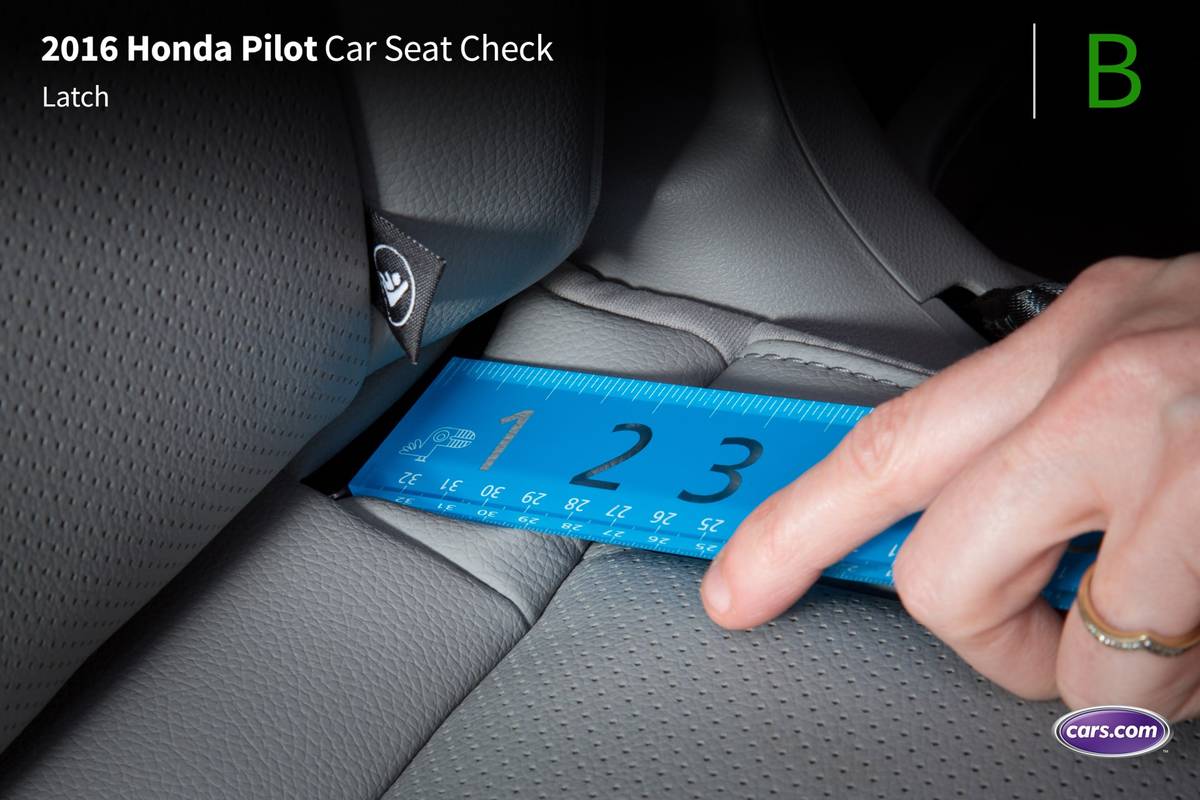
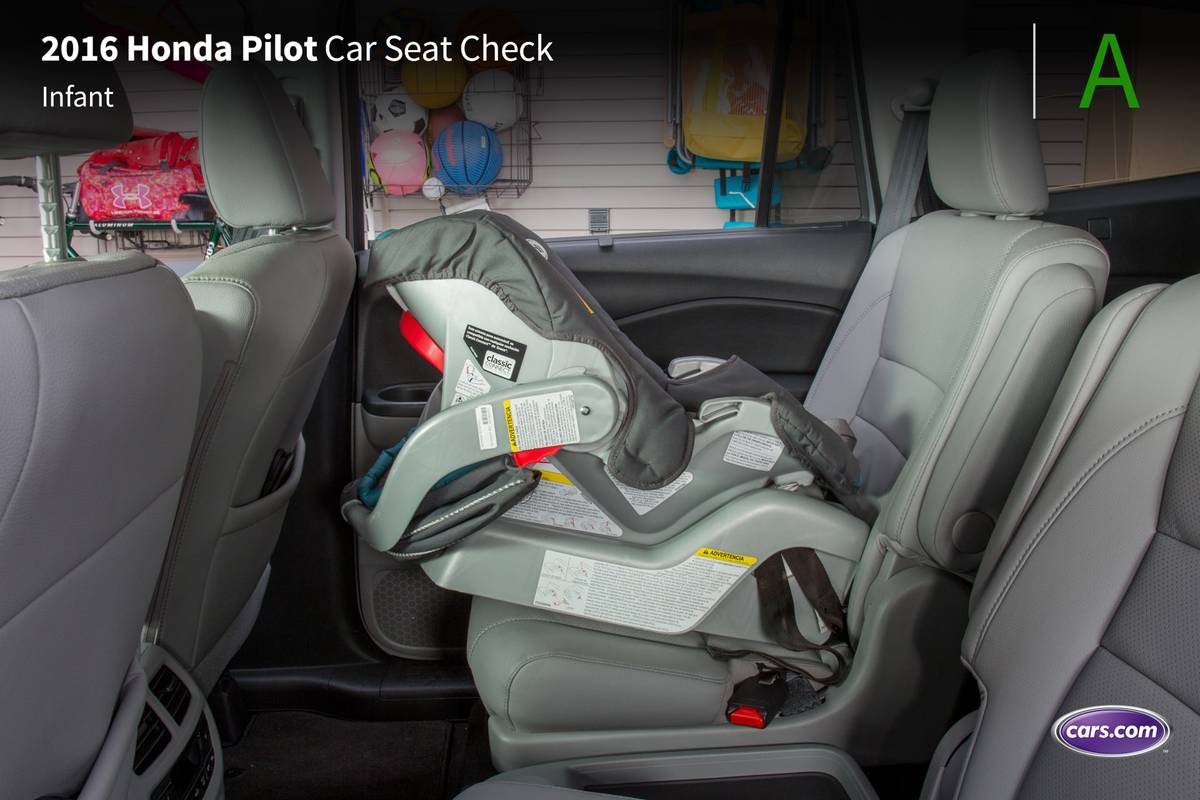
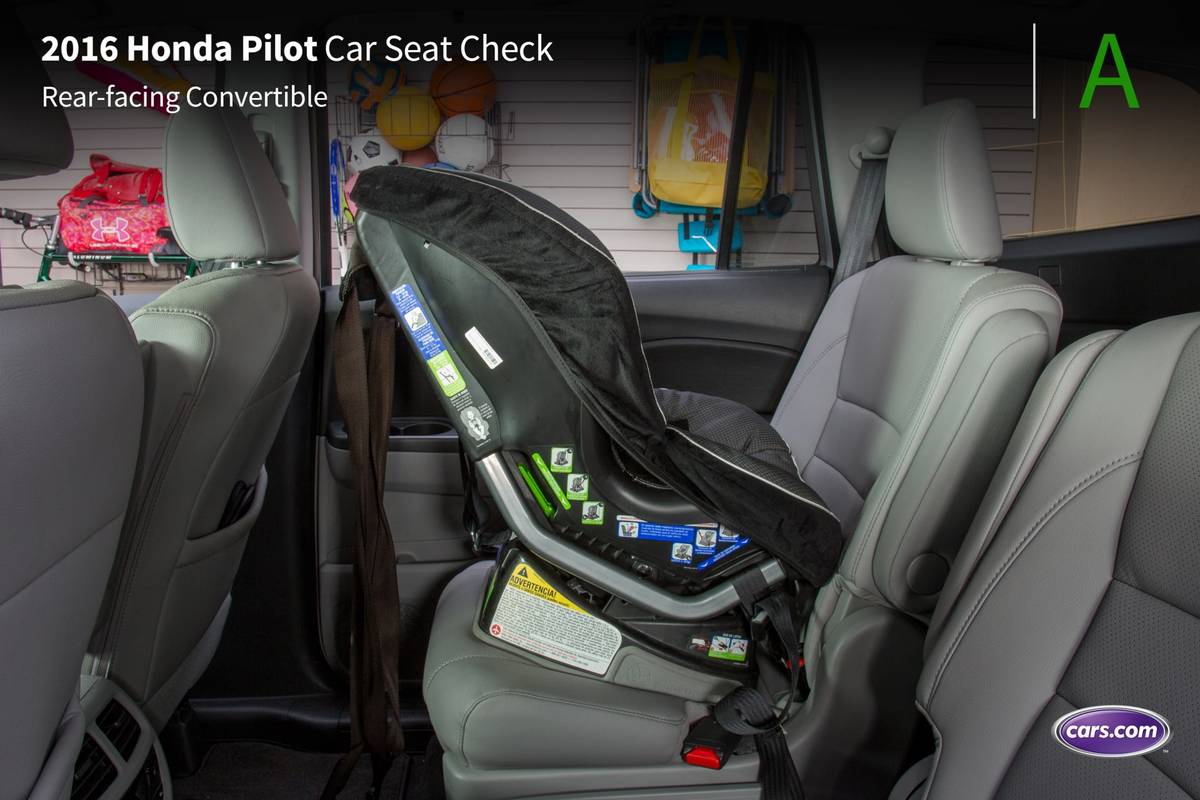
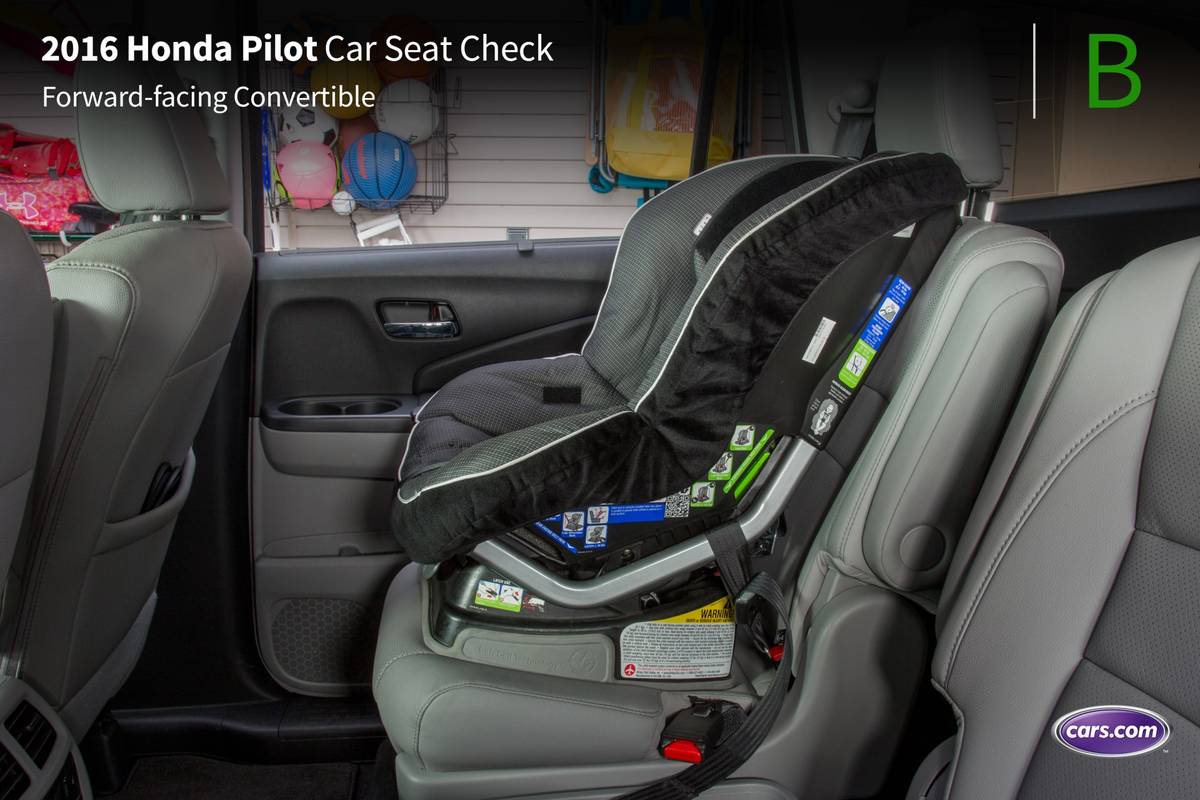
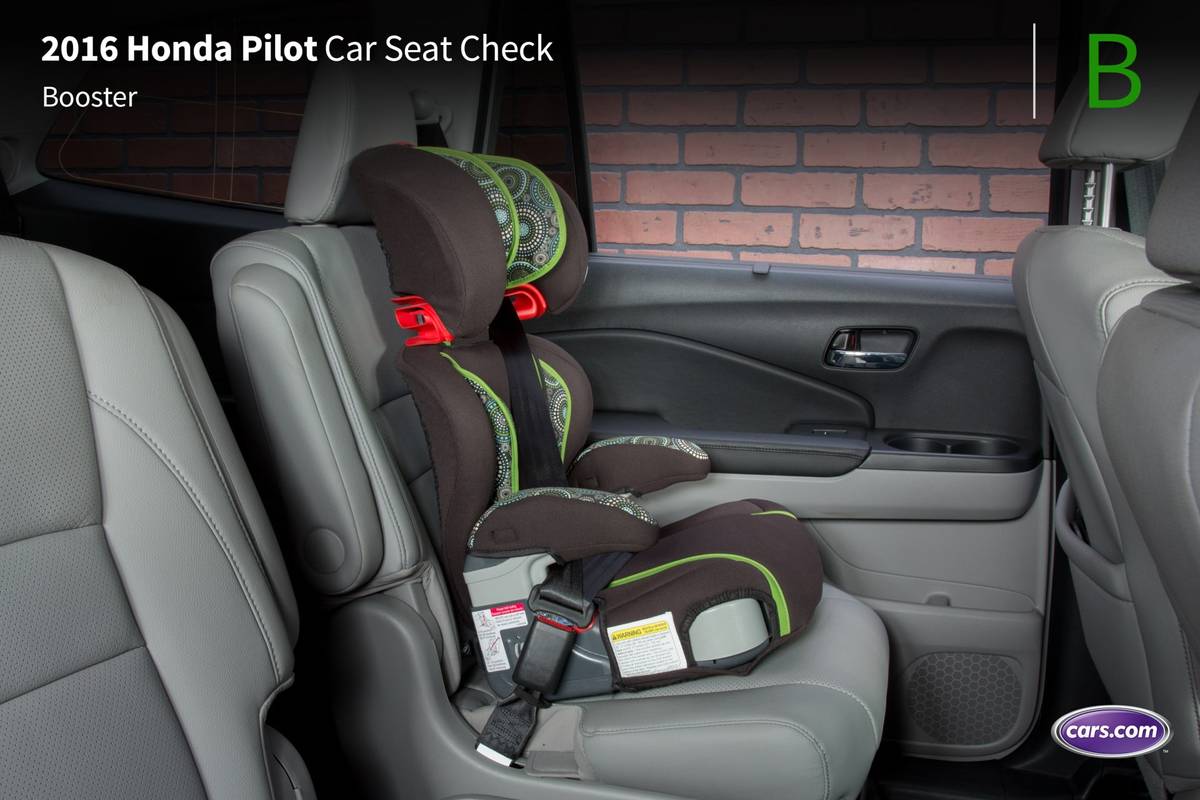
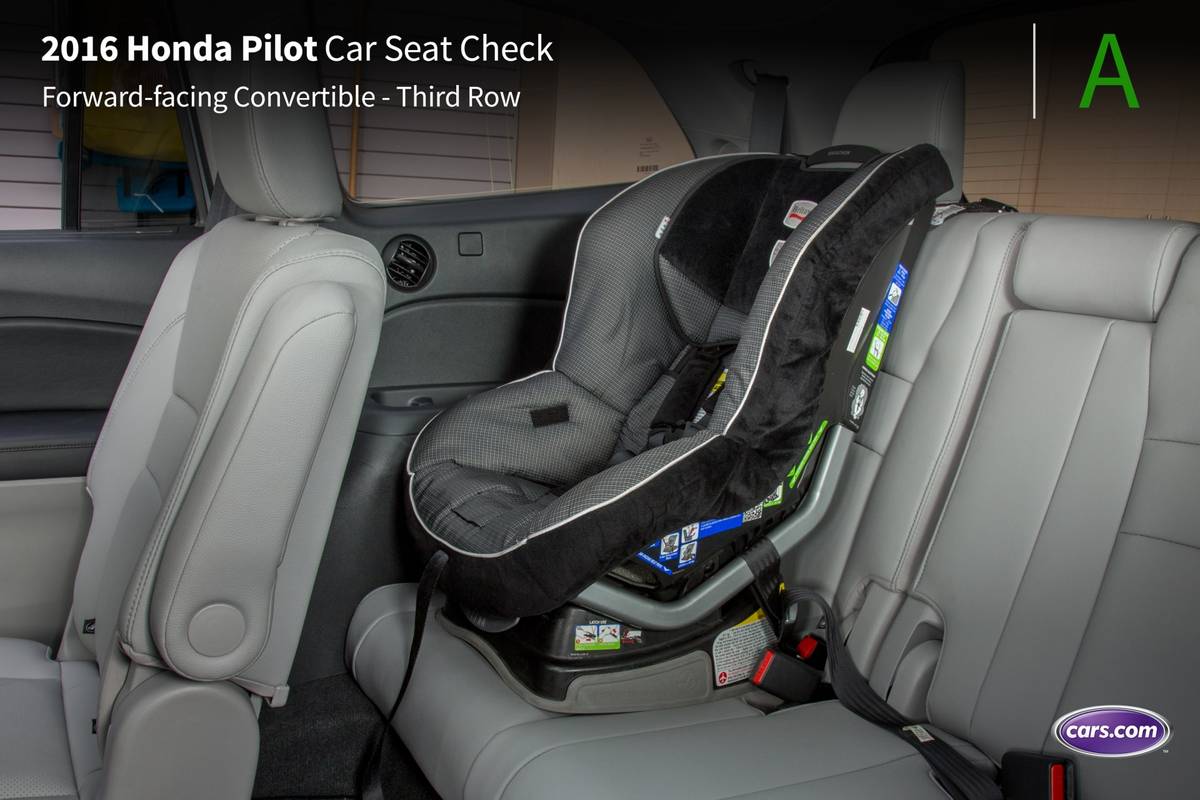

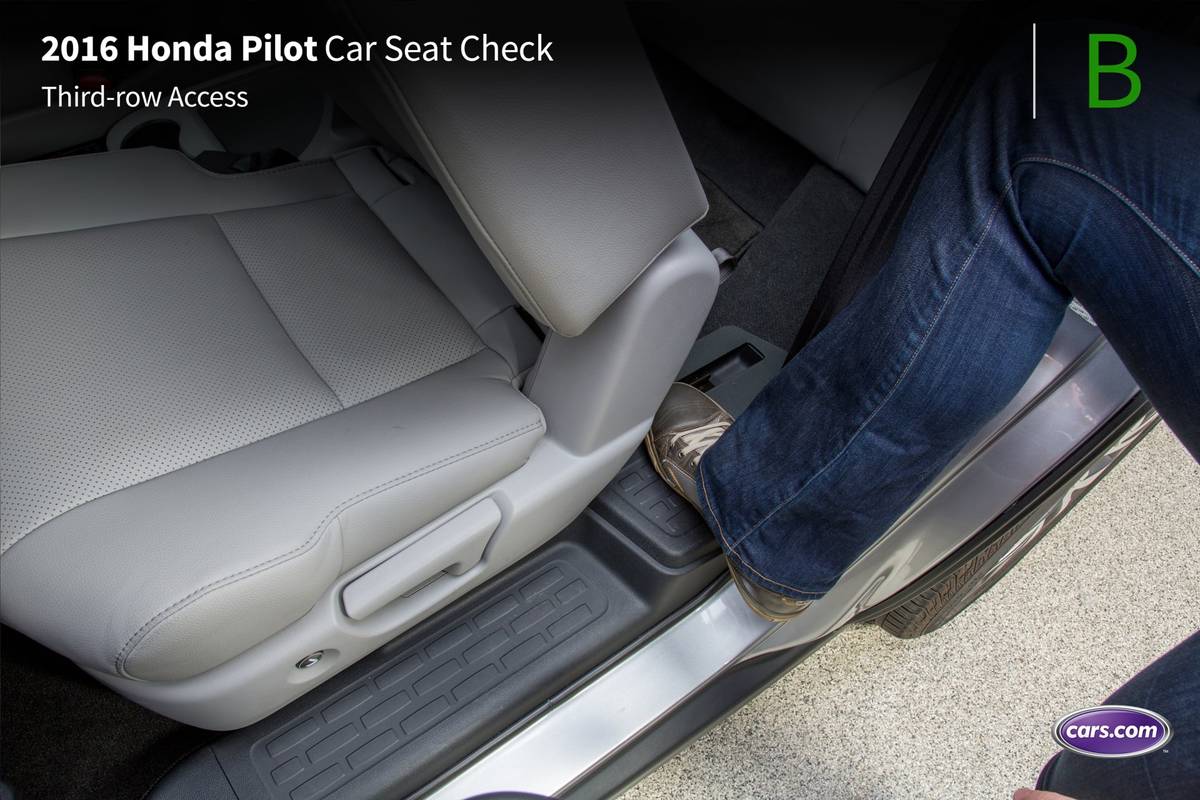








Grading Scale
A: Plenty of room for the car seat and the child; doesn’t impact driver or front-passenger legroom. Easy to find and connect to Latch and tether anchors. No fit issues involving head restraint or seat contouring. Easy access to the third row.
B: Plenty of room. One fit or connection issue. Some problems accessing third row when available.
C: Marginal room. Two fit or connection issues. Difficult to access third row when available.
D: Insufficient room. Two or more fit or connection issues.
F: Does not fit or is unsafe.
About Cars.com’s Car Seat Checks
Editors Jennifer Geiger and Jennifer Newman are certified child safety seat installation technicians.
For the Car Seat Check, we use a Graco SnugRide Classic Connect 30 infant-safety seat, a Britax Marathon convertible seat and Graco TurboBooster seat. The front seats are adjusted for a 6-foot driver and a 5-foot-8 passenger. The three child seats are installed in the second row. The booster seat sits behind the driver’s seat, and the infant and convertible seats are installed behind the front passenger seat.
We also install the forward-facing convertible in the second row’s middle seat with the booster and infant seat in the outboard seats to see if three car seats will fit; a child sitting in the booster seat must be able to reach the seat belt buckle. If there’s a third row, we install the booster seat and a forward-facing convertible. To learn more about how we conduct our Car Seat Checks, go here.
Parents should also remember that they can use the Latch system or a seat belt to install a car seat, and that Latch anchors have a weight limit of 65 pounds, including the weight of the child and the weight of the seat itself.

Editor-in-Chief Jennifer Newman is a journalist with more than 25 years of experience, including 15 years as an automotive journalist at Cars.com. Jennifer leads the Editorial team in its mission of helping car shoppers find the vehicle that best fits their life. A mom of two, she’s graduated from kids in car seats to teens behind the steering wheel. She’s also a certified car-seat technician with more than 12 years of experience, as well as member of the World Car Jury, Automotive Press Association and Midwest Automotive Media Association. LinkedIn: https://www.linkedin.com/in/jennilnewman/ Instagram: @jennilnewman
Featured stories












